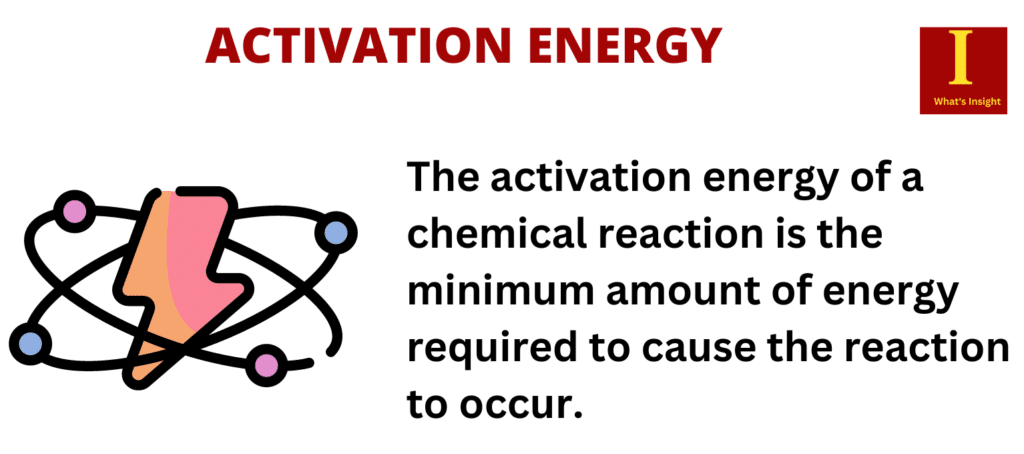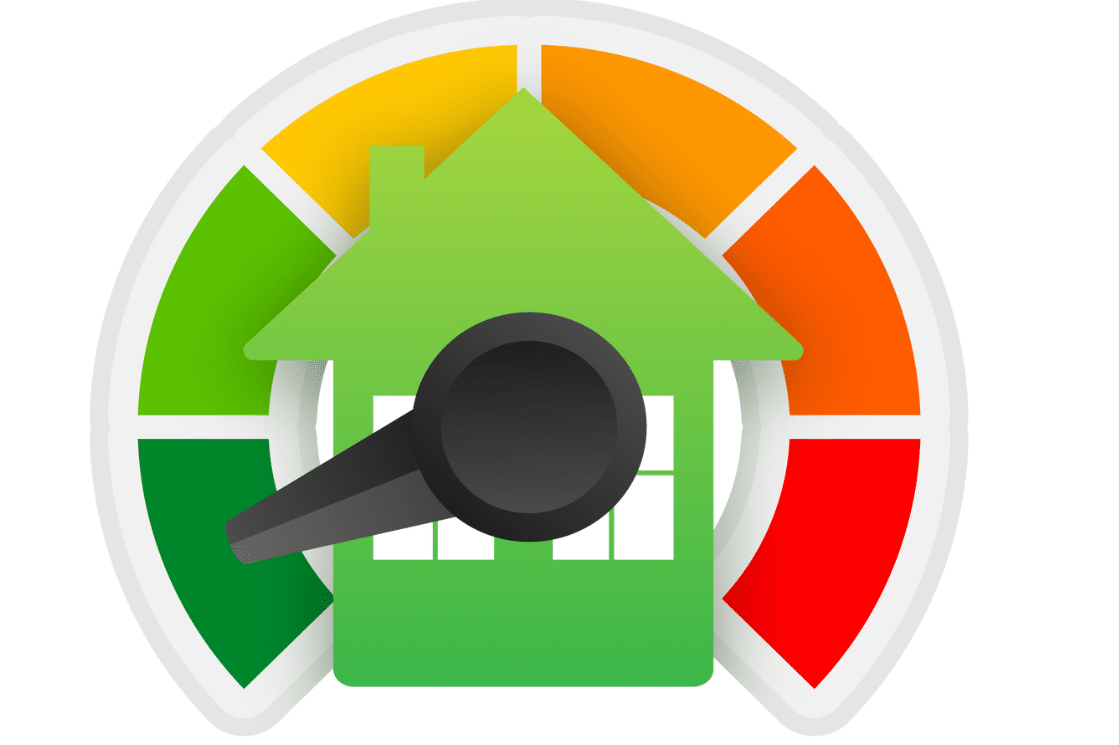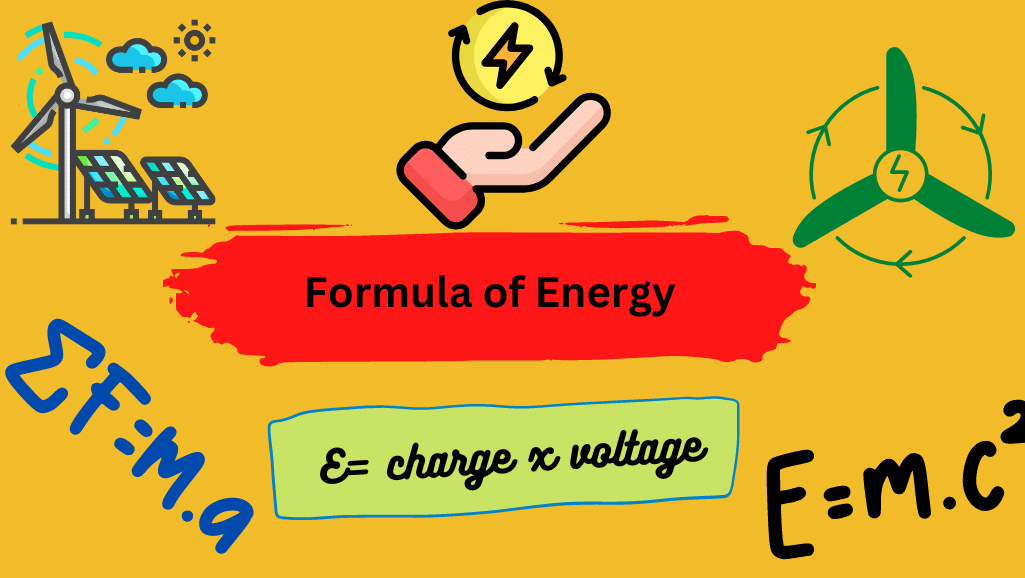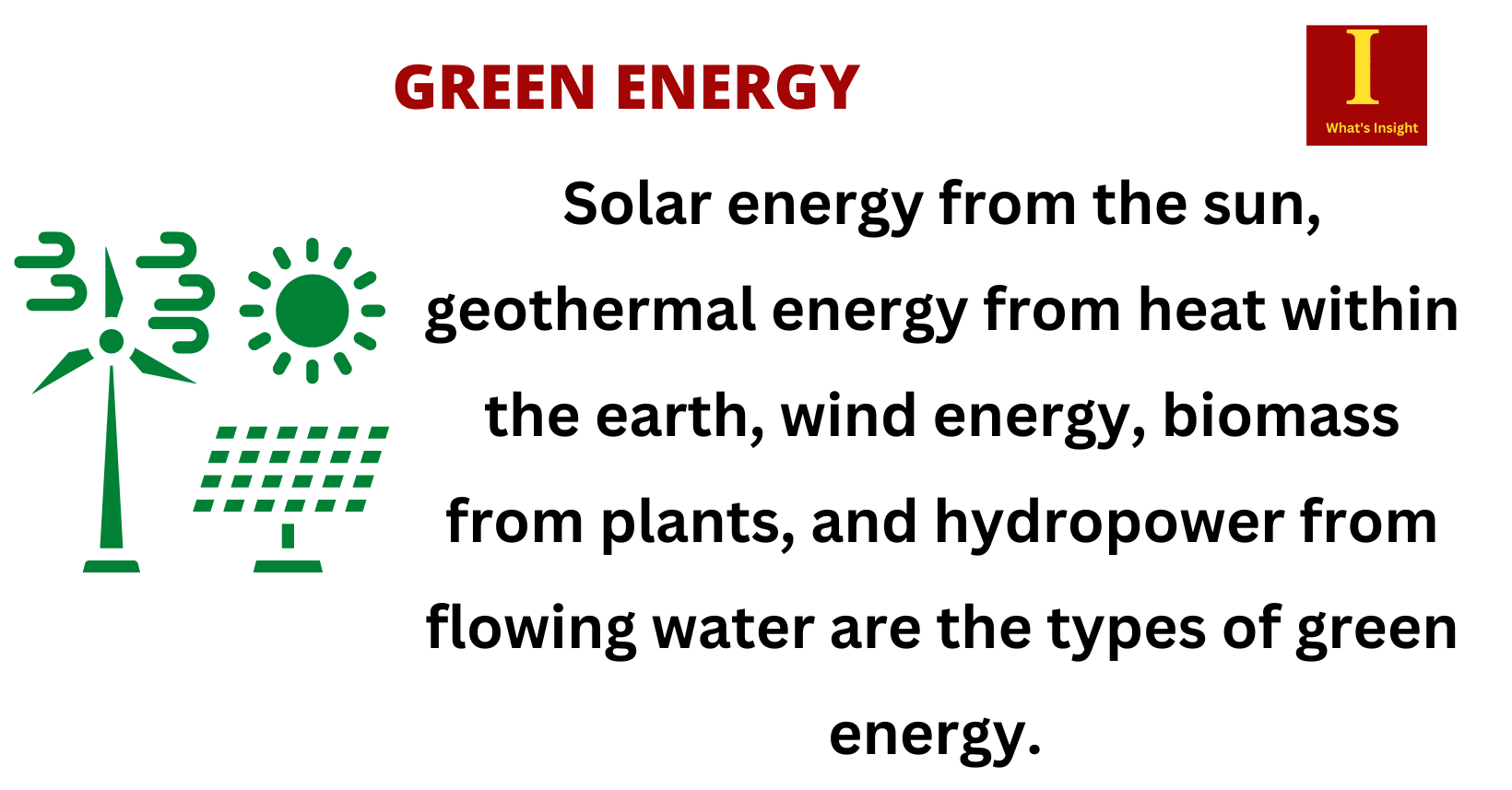The activation energy of a chemical reaction is the minimum amount of energy required to cause the reaction to occur. It is usually denoted by the symbol Ea and is measured in kilojoules per mole. It can be viewed as a barrier between reagents and reaction products.

In simple words, activation energy is the energy difference between the transition state and the starting reagents. A match being burned is a simple example of activation energy. When a match burns, it emits enough energy to start the next reaction, and so on. The match, however, will not spontaneously ignite.
Some important points about activation energy are listed below:
- To begin, all chemical reactions, including exothermic reactions, require activation energy.
- Activation energy is required for reactants to move together, overcome repulsion forces, and begin breaking bonds.
| Definition | Activation energy is defined as the minimum amount of energy required to activate molecules or atoms in order for them to undergo a chemical reaction. |
| Formula | log K = log A – Ea /2.303RT (Ea is the activation energy, a simplified form of Arrhenius equation) |
| SI Unit | kilojoules per mole |
| Examples | – Burning of match – In a car engine, an electric spark begins the burning of the gasoline – the breakdown of glucose into pyruvic acid requires activation energy – For plants to begin the photosynthesis reaction, sunlight provides activation energy. |
For a reaction to occur, existing bonds must break and new ones form. A reaction occurs only if the products are more stable than the reactants. For instance, if we light a fire on wood, we convert the carbon in wood into CO2, which is a more stable form of carbon than wood, so the reaction continues and in the process produces heat. The initial heat needed to ignite the fire in this example is the activation energy.
Table of Contents
Arrhenius equation and activation energy
The Arrhenius equation is given as k=Ae-Ea/RT, where:
- k is the reaction rate constant;
- A is a constant which represents a frequency factor for the process;
- Ea is the activation energy for the reaction;
- R is the gas constant;
- T is the temperature in Kelvin.
The Arrhenius equation explains how the rate of a chemical reaction varies exponentially with temperature.
In simple terms, the Arrhenius equation formula states that as temperature rises, the fraction of molecules with kinetic energies more significant than the activation energy of the reaction rises. As a result, the reaction’s total activation energy decreases. As a result, the rate of the reaction accelerates.
The formula of activation energy can be derived from the Arrhenius equation as given below:
K = Ae-Ea/RT
Taking log on both sides
ln K = ln A – (Ea /RT)ln e
2.303 log K = 2.303 log A – Ea/RT
log K = log A – Ea /2.303RT
Daily Life Examples of Activation Energy
Here are some daily life examples of the activation energy of a chemical reaction:
- Lighting a match: The activation energy required to start a fire by lighting a match comes from friction between the match head and the striking surface.
- Cooking food: Many cooking processes, such as baking a cake, require heat to be applied over time. The activation energy required to start the cooking process comes from the initial heating of the oven or stove.
- Digestion: Digestive enzymes in the human body require a certain amount of activation energy to break down food into smaller molecules that can be absorbed by the body.
- Combustion of fuels: Burning gasoline or diesel fuel in a car engine requires a spark or other ignition source to provide the activation energy needed to start the reaction.
- Rusting of iron: The process of rusting requires the presence of oxygen, moisture, and a certain amount of activation energy to initiate the chemical reaction that forms rust on iron surfaces.
- Photosynthesis: The process of photosynthesis in plants requires light energy to provide the activation energy needed to convert carbon dioxide and water into glucose and oxygen.
Summary
- The minimum amount of energy necessary to activate molecules or atoms so that they can engage in a chemical reaction is known as activation energy.
- The Arrhenius equation describes how the rate of a chemical reaction varies exponentially with temperature.
Frequently Asked Questions
1. What is a catalyst?
A catalyst is a substance that increases the rate of a chemical reaction. Since the catalyst is not a reactant, it is unaffected by the reaction. By lowering the activation energy, the catalyst “assists” the reaction. Enzymes, which act as catalysts, are found in our bodies. Catalysts are also used in automobiles. The catalytic converter contains platinum and palladium. They speed up the reactions that make exhaust less harmful to the environment.
2. How activation energy differs for exothermic and endothermic reactions?
Exothermic reactions can proceed without needing continuous energy input because the energy released as the products form provides the necessary activation energy. However, endothermic reactions still require energy from the environment in order to provide the activation energy required for the substances to react.
More Links
- BCl3 Lewis Structure in four simple steps - November 1, 2023
- PH3 Lewis Structure in four simple steps - October 8, 2023
- PF3 Lewis structure in four simple steps - September 24, 2023



